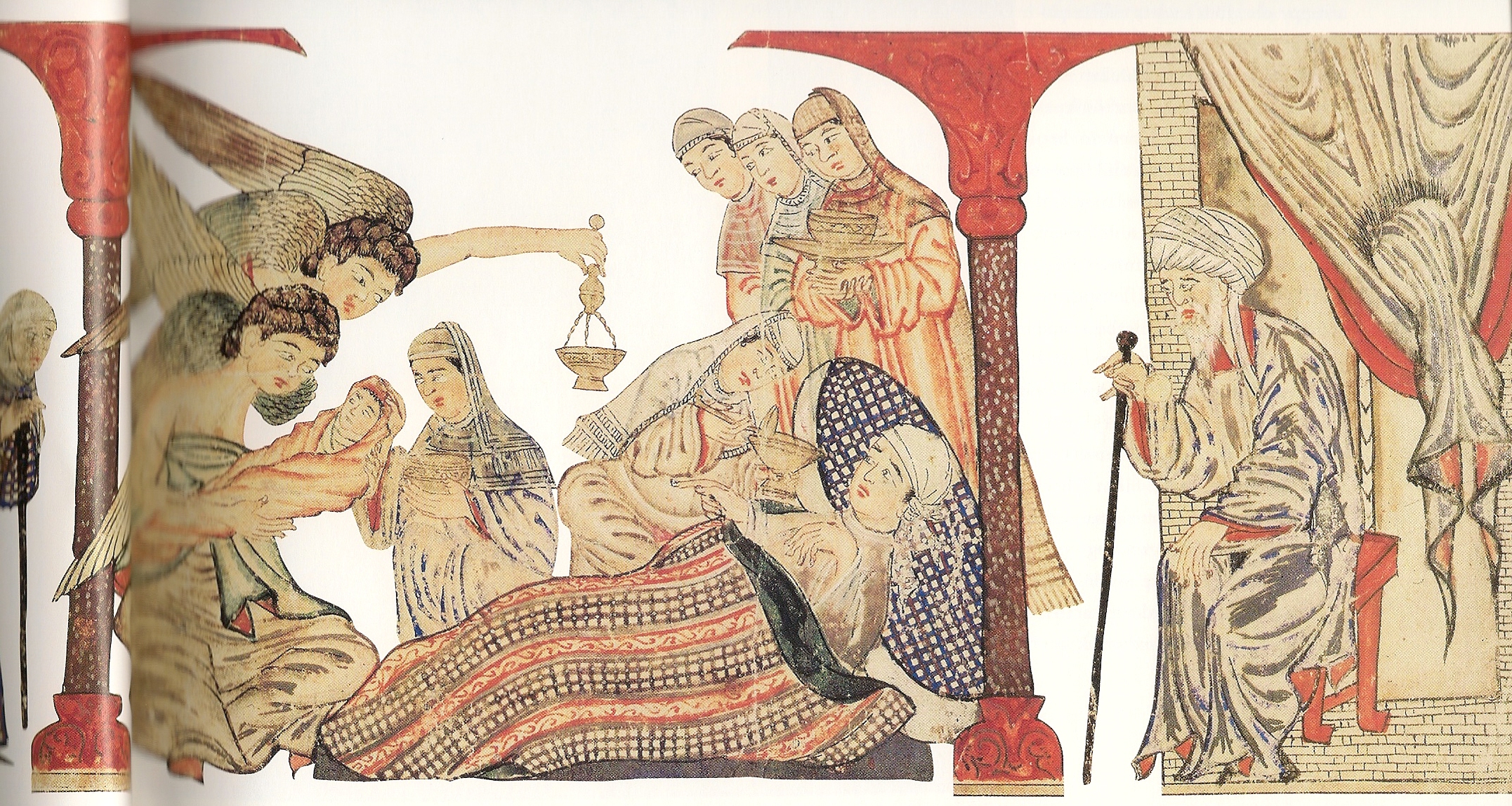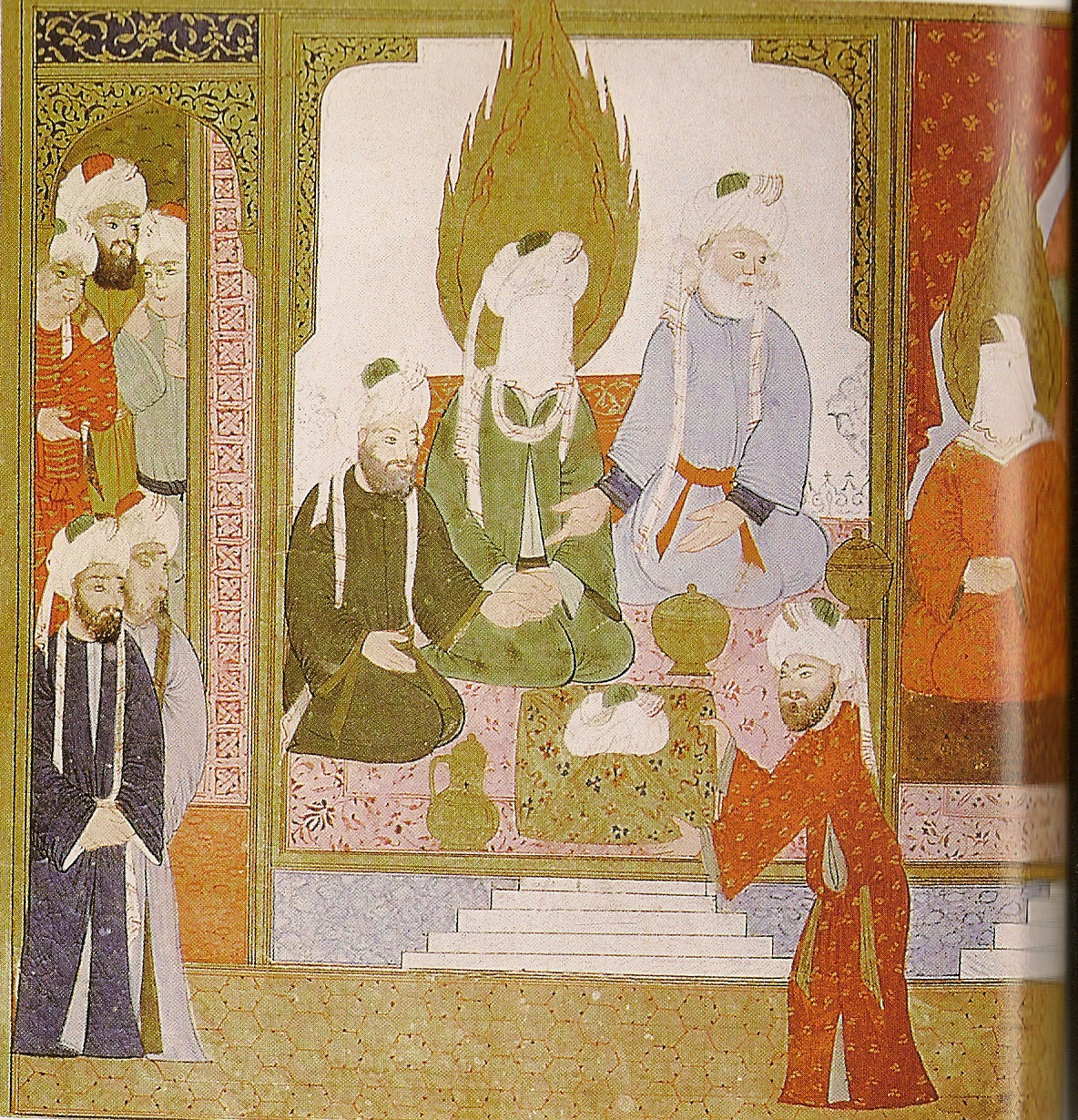Lowering the bar on incitements to violence *UPDATED*
Unless you’ve been visiting some other planet somewhere in the universe, you already know about Comedy Central’s South Park debacle. That’s the one, of course, that saw Comedy Central, the oh-so-hip-and-edgy (meaning often offensive) television station brutally censoring a South Park episode that implied that Mohamed was walking around wearing a bear suit — when it turned out to have been Santa in the suit all along.
Comedy Central made this censorship decision when a New York Muslim suggested that airing the show as written might result in a Theo Van Gogh moment. That would mean that someone associated with the show would soon be appearing on the streets of New York with multiple stab wounds, a partially severed head, and a wildly hostile-to-Western-culture letter impaled on his chest.
There are a couple of points I want to make about this whole embarrassing debacle — embarrassing for Comedy Central, which shows that it’s offensive only when it’s safe; and a debacle, because it’s one more nail in the coffin of the free speech that has always been an integral part of America’s political and social culture.
My first point riffs off something David Hazony said in a Commentary blog post about the South Park episode (emphasis mine):
The core of liberal society is the belief that every new thought, every iconoclasm, every “dangerous” idea, can be uttered somewhere, by someone, as long as it doesn’t openly incite violence — and that every sacred cow is ultimately just a cow.
(I urge you to read the whole post, but the above sentence is the one that intrigued me.)
In the old days, the notion of incitement to violence examined whether the speaker literally incited violence. For example, the speaker might say to the crowd “Kill the President” or “Kill the Congress person” or “Kill all the meter maids” or something equally incendiary. The threat of violence wasn’t implicit in the speech; it was explicit. No civilized society could countenance speech that simply and directly inflamed blood lust. We in America have always been willing to trade in the world of ideas, but the civil contract demands that we stop short of demanding someone’s head on a pike.
We’ve now entered a brave new world that redefines “incitement to violence” away from its traditional meaning of explicit demands for blood, death or revolution. Now, “incitement to violence” includes speech or images that hurt someone’s feelings or offend their sensibilities. As a society, we used to say that it was just tough if someone’s sensitivities were roughed up by speech that falls far short of calling for that person’s (or someone else’s) blood. We recognized that our civil contract — our constitutional contract — requires for its health resilient people who can deal with hurt feelings.
Now, however, we see our media and political outlets repeatedly defining as incitement speech that lacks any calls for violence but that merely makes the crazy man angry. Where we would once police the crazy man, we now police ourselves. Everything we say must be run through the filter of “will it make the crazy man angry?”
Except of course, we’re not talking about any random crazy man. We’re talking about the sharia-obsessed Muslim crazy man. And by making that man — that sharia man — the standard by which incitement must be judged, we’re veering sharply away from a constitutional standard of free speech, and placing ourselves squarely within that man’s sharia code. Which really means that the second American Revolution, the one that sees us forever part ways with our current system of government, will begin, and end, not with flaring muskets and brave midnight battles, but with a whimper and a bowed head.
What’s even worse (I’m at my second point, now), is that we’re out-sharia-ing sharia, and caving, not to the demands of the moderates, but to the extremists. (Frankly, we’ve become such a PC, identity-politics obsessed culture that we’d cave to moderates too if we felt it would spare the feelings of someone defined as a victim in the PC lexicon.) The wholesale ban on any Mohamed images whatsoever is an extremist ban. Take for example this truly beautiful medieval painting, which I got from a pre-911 book:

Isn’t that exquisite (despite the scanning flaws arising from the picture’s spread across two pages)?
Not only is it beautiful, it’s also a picture of Mohamed. The swaddled little baby in the far left corner, with his face fully revealed, cradled in the arms of two loving angels, is Mohamed himself. Some medieval Muslim, inspired by Christian iconography surrounding the birth of Christ, painted this reverential scene of Mohamed’s birth.
Admittedly, the above painting seems to be a rarity. Other medieval Muslims painted Mohamed too, but they carefully veiled his face, to avoid something that could be considered a blasphemous or inaccurate image. (Considering that there are no contemporary images of Mohamed, just as there are no contemporary images of Jesus Christ, the fact is that all images are inaccurate, reflecting the artist’s faith and skill, rather than a carefully limned image of known features.) The medieval era, therefore, produced myriad pictures, such as this one, portraying Mohamed’s marriage to one of his wives:

Mohamed, on the left, has a veil neatly drawn across his face. The artist has reverentially drawn a scene without exposing himself to the inevitable risk of erroneously portraying the prophet’s face. Incidentally, if you’re really thinking this through, as the radicals seem not to have done, you might conclude that, although a bear costume isn’t a neat, curtain-like little veil, the effect is identical: Mohamed is hidden from view.
All of the above, of course, is art historian persnickety-ness. The real issue is that fact that we, a free society that has never let government dictate to us the terms of our religious worship, are meekly allowing a religion to which we do not subscribe to dictate the terms of our social, political, artistic, ideological and intellectual behavior. The proscription against potentially blasphemous images of Mohamed should apply only to Muslims. The fact that Muslims wish to apply it to all of us tells us volumes about their jihad mentality (a world at war, with a winning Islam and a losing everyone else) and our self-abasing victim approach to those chest-thumpers in the Islamist camp who want to make now the time, and this the place, for their world conquest.
Sadly, Comedy Central isn’t an anomaly. Instead, it seems to be a harbinger of things to come. It’s conduct is the thin of edge of the wedge when it comes to a cultural decision to give in and, by giving in, give away the constitutional freedoms that generations of our forebearers fought bravely to defend.
UPDATE: A friend reminded me that Zombie created a full post with exquisite Islamic iconography showing Mohamed’s face. Please check it out, as the images are better than anything I’ve included here.
